|
Books Should Be Free Loyal Books Free Public Domain Audiobooks & eBook Downloads |
|
|
Books Should Be Free Loyal Books Free Public Domain Audiobooks & eBook Downloads |
|
Fantasy Books |
|---|
|
Book type:
Sort by:
View by:
|
By: James Blish (1921-1975) | |
|---|---|
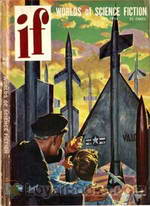 The Thing in the Attic
The Thing in the Attic
Honath the Pursemaker is a heretic. He doesn’t believe the stories in the Book of Laws which claims giants created his tree-dwelling race. He makes his opinion known and is banished with his infidel friends to the floor of the jungle where dangers abound. Perhaps he’ll find some truth down there. – The Thing in the Attic is one of Blish’s Pantropy tales and was first published in the July, 1954 edition of If, Worlds of Science Fiction magazine. | |
By: Lucian of Samosata (120—180) | |
|---|---|
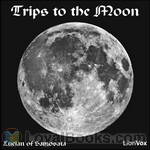 Trips to the Moon
Trips to the Moon
The endeavour of small Greek historians to add interest to their work by magnifying the exploits of their countrymen, and piling wonder upon wonder, Lucian first condemned in his Instructions for Writing History, and then caricatured in his True History, wherein is contained the account of a trip to the moon, a piece which must have been enjoyed by Rabelais, which suggested to Cyrano de Bergerac his Voyages to the Moon and to the Sun, and insensibly contributed, perhaps, directly or through Bergerac, to the conception of Gulliver’s Travels. The Icaro-Menippus Dialogue describes another trip to the moon, though its satire is more especially directed against the philosophers. | |
By: Thornton W. Burgess (1874-1965) | |
|---|---|
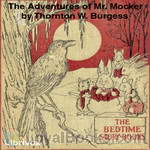 The Adventures of Mr. Mocker
The Adventures of Mr. Mocker
When an innocent blue jay starts talking in his sleep, it’s up to him to find out what’s going on in this fun, naturalistic, Southern-style children’s story. | |
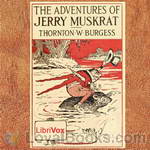 The Adventures of Jerry Muskrat
The Adventures of Jerry Muskrat
Join us as we follow Jerry Muskrat and his friends on an adventure to discover what is threatening their homeland; The Laughing Brook and The Smiling Pool. | |
By: May Agnes Fleming (1840-1880) | |
|---|---|
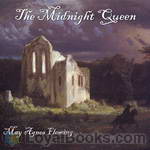 The Midnight Queen
The Midnight Queen
May Agnes Fleming is renowned as Canada's first best-selling novelist. She wrote 42 novels, many of which have only been published posthumely.The Midnight Queen is set in London, in the year of the plague 1665. Sir Norman Kingsley visits the soothsayer "La Masque" who shows him the vision of a beautiful young lady. Falling madly in love with her, he is astonished to find her only a short time later and saves her from being buried alive. He takes her home to care for her, but while he fetches a doctor, she disappears. Sir Kingsley and his friend Ormistan embark on an adventure to solve the mystery of the young lady - will they ever find her again? | |
By: F. Anstey (1856-1934) | |
|---|---|
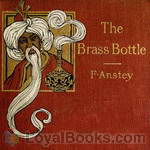 The Brass Bottle
The Brass Bottle
What happens when a not-so-lucky man happens upon a brass bottle and releases the djinni caught within? Misunderstanding, culture shock, hilarity, among other things. Will the well-intentioned djinni help his new master? Or will he make things even worse? | |
 Tinted Venus
Tinted Venus
When a young newly engaged man finds himself bound for an amusement garden with an old flame, not his fiancee, it is not surprising that he still feels some attraction for her. When they escape the heat of the dance floor to walk among the trees in the garden, it is not surprising that they should come upon a statue of a woman of uncommon beauty, with the smallest hands. When the young man attempts to demonstrate that his absent fiancee has hands even smaller than this immortalized stone woman, it is surprising when the engagement ring he is carrying fits easily on the stone finger, but does not easily come off... | |
 In Brief Authority
In Brief Authority
Satiric comedy from 1915 about a nouveau riche British family and their nanny who get whisked off to Maerchenland ('the land of Fairy Tales') one evening in a car drawn by storks. The matron of the family, a thorough snob, is crowned Queen of the country by mistake. She is quick to accept her new position and is determined to introduce British social niceties in her realm. And this really is the land of Fairy Tales, with gnomes, giants, a dragon, magic, a fairy godmother and more. Trouble quickly starts to brew as the royal couple and their son introduce things like capitalism and golf... | |
By: Leigh Brackett (1915-1978) | |
|---|---|
 Black Amazon of Mars
Black Amazon of Mars
Carrying out the last wishes of a comrade, mercenary Eric John Stark takes on the task of returning a stolen talisman to a walled city near the Martian pole; a city that guards the mysterious Gates of Death. Now all he has to do is get past the brutal clans of Mekh and the shadowy Lord Ciaran to get to Kushat where they’ll probably attempt to kill him. All while he tries to hold on to a talisman that imprints ancient memories of the Gates in his mind. That’s not easy for a human raised by Mercurian aborigines... | |
By: Carey Rockwell | |
|---|---|
 Sabotage in Space
Sabotage in Space
This book is part of the on-going adventures of Tom Corbett in the Space Cadet Stories. Tom, Astro and Roger are determined to find the saboteurs but get framed in the process, risking court martial and expulsion from the Space Academy. NOTE: Carey Rockwell is a pseudonym used by Grosset & Dunlap. It is unknown who wrote the books. | |
By: Elsie Spicer Eells | |
|---|---|
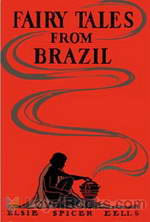 Fairy Tales from Brazil
Fairy Tales from Brazil
This book, subtitled "How and Why Tales from Brazilian Folk-Lore", is a collection of short stories, most of them etiologial myths from Brazilian Indian Folklore. | |
By: Albert Kinross (1870-1929) | |
|---|---|
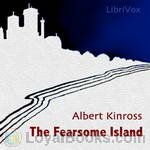 The Fearsome Island
The Fearsome Island
No ordinary sailor's tale, this. Based allegedly on the real experiences of Silas Fordred, Master Mariner of Hythe, this is a story of shipwreck on an uncharted island and his supernatural adventures there with a witch, a hairy man, and various devilish devices and traps. The author, Kinross, adds an appendix purporting to explain the marvels which Fordred encountered.Kinross claims to have stolen the sailor's original account from Hythe Town Hall while helping the Town Clerk to sort newly discovered old papers... | |
By: Eugène Sue (1804-1857) | |
|---|---|
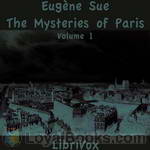 The Mysteries of Paris, Volume 1
The Mysteries of Paris, Volume 1
The Mysteries of Paris (French: Les Mystères de Paris) is a novel by Eugène Sue which was published serially in Journal des débats from June 19, 1842 until October 15, 1843. Les Mystères de Paris singlehandedly increased the circulation of Journal des débats. There has been lots of talk on the origins of the French novel of the 19th century: Stendhal, Balzac, Dumas, Gautier, Sand or Hugo. One often forgets Eugène Sue. Still, The Mysteries of Paris occupies a unique space in the birth of this... | |
By: Baron Ludvig Holberg (1684-1754) | |
|---|---|
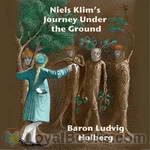 Niels Klim's Journey Under the Ground
Niels Klim's Journey Under the Ground
Niels Klim’s Underground Travels, originally published in Latin as “Nicolai Klimii Iter Subterraneum” (1741) is a satirical science-fiction/fantasy novel written by Ludvig Holberg, a Norwegian-Danish dramatist, historian, and essayist, born in Bergen, Norway. It was his first and only novel. It describes a utopian society from an outsider’s point of view, and often pokes fun at diverse cultural and social topics such as moral, science, sexual equality, religion, governments, and philosophy. | |
By: Lord Dunsany (1878-1957) | |
|---|---|
 Fifty-One Tales
Fifty-One Tales
Very brief, well-crafted stories, many having surprise endings, all steeped in the dye of myth and calling to every reader's neglected imagination. | |
By: Lord Dunsany (1878-1957) | |
|---|---|
 Gods of Pegāna
Gods of Pegāna
"The Gods of Pegāna" is the first book by Anglo-Irish fantasy writer Lord Dunsany, published on a commission basis in 1905... The book is a series of short stories linked by Dunsany's invented pantheon of deities who dwell in Pegāna. It was followed by a further collection "Time and the Gods" and by some stories in "The Sword of Welleran and Other Stories". | |
 Dreamer's Tales
Dreamer's Tales
"A Dreamer's Tales" is the fifth book by Irish fantasy writer Lord Dunsany, considered a major influence on the work of H. P. Lovecraft, J. R. R. Tolkien, Ursula K. Le Guin, Michael Moorcock and others. "A Dreamer's Tales" is a collection of sixteen fantasy short stories, and varies from the wistfulness of "Blagdaross" to the horrors of "Poor Old Bill" and "Where the Tides Ebb and Flow" to the social satire of "The Day of the Poll." (text from Wikipedia articles on Lord Dunsany and "A Dreamer's Tales") | |
 Don Rodriguez: Chronicles of Shadow Valley
Don Rodriguez: Chronicles of Shadow Valley
| |
By: Thomas Anstey Guthrie (1856-1934) | |
|---|---|
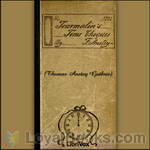 Tourmalin’s Time Cheques
Tourmalin’s Time Cheques
Peter Tourmalin is on a sea voyage back home to England from Australia, to return to his fiancee, and he is very bored. The fact that the time difference adds on extra hours to his boredom only makes it worse. So when he gets a unique opportunity to deposit his spare time into an account with the “Anglo-Australian Joint Stock Time Bank, Limited” he doesn’t hesitate for long. By opening this account, he doesn’t have to spend his spare time right away, but can withdraw it at any future date, when he wants a break... | |
By: Ruth Plumly Thompson (1891-1976) | |
|---|---|
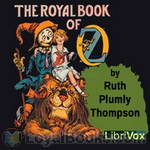 The Royal Book of Oz
The Royal Book of Oz
The Royal Book of Oz (1921) is the fifteenth in the series of Oz books, and the first to be written by Ruth Plumly Thompson after L. Frank Baum’s death. Although Baum was credited as the author, it was written entirely by Thompson. The Scarecrow is upset when Professor Wogglebug tells him that he has no family, so he goes to where Dorothy Gale found him to trace his “roots.” Then he vanishes from the face of Oz. Dorothy and the Cowardly Lion mount a search for their friend, but when that is successful, they will need to become a rescue party! | |
By: Rudolf Erich Raspe (1737-1794) | |
|---|---|
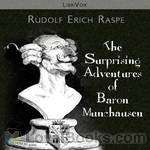 The Surprising Adventures of Baron Munchausen
The Surprising Adventures of Baron Munchausen
The stories about Münchhausen were first collected and published by an anonymous author in 1781. An English version was published in London in 1785, by Rudolf Erich Raspe, as Baron Munchhausen's Narrative of his Marvellous Travels and Campaigns in Russia, also called The Surprising Adventures of Baron Munchhausen. It is not clear how much of the story material derives from the Baron himself; however, it is known that the majority of the stories are based on folktales that have been in circulation for many centuries before Münchhausen's birth. | |
By: John W. Campbell (1910-1971) | |
|---|---|
 The Ultimate Weapon
The Ultimate Weapon
The star Mira was unpredictably variable. Sometimes it was blazing, brilliant and hot. Other times it was oddly dim, cool, shedding little warmth on its many planets. Gresth Gkae, leader of the Mirans, was seeking a better star, one to which his "people" could migrate. That star had to be steady, reliable, with a good planetary system. And in his astronomical searching, he found Sol.With hundreds of ships, each larger than whole Terrestrial spaceports, and traveling faster than the speed of light, the Mirans set out to move in to Solar regions and take over... | |
By: Richard Barnum | |
|---|---|
 Squinty the Comical Pig
Squinty the Comical Pig
"This comical children's tale about the funny adventures of a funny pig written by an unknown author. The publisher has hired authors to write children's tales, and gave them "house names". The "name" of the author who wrote this tale is Richard Barnum. It became very successful, the most well known of Richard Barnum's tales. So, if you want to laugh a little, even if you are not a child, read this book". | |
By: Lucius Apuleius | |
|---|---|
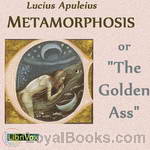 Metamorphosis or The Golden Ass
Metamorphosis or The Golden Ass
The Metamorphosis, also known as The Golden Ass, is one of the very few novels of the Ancient World that survived to our days; one of the two novels of Roman Literature that we can still read; and the only one preserved in its entirety (the other one being the extremely fragmentary Satyricon). The story of the Metamorphosis, the tale of a man turned into a donkey that goes through many adventures to become a man again, inspired many other similar ones later on. However, more than just the plot, the style of the Golden Ass also made it famous... | |
By: Coulson Kernahan (1858-1943) | |
|---|---|
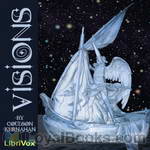 Visions
Visions
Deeper questions of life and death, and of God’s relationship to man, are explored in this collection of “dreams” by a noted English novelist and literary critic. A man takes an uncertain step into the next world as his life ends – Defendants at the Last Judgment hurl their own accusations at the Judge – An angel arrives on Christmas Eve to guide one soul through a night of despair and doubt – Flowers in a garden contemplate their own mortality – What would it mean if the world renounced Christ, or God took Christ away from the world? – And in a world of the future, pleasure and luxury are pursued … and children are nowhere to be found. (Introduction by D. Leeson) | |
By: L. Adams Beck (1862-1931) | |
|---|---|
 The ninth vibration and other stories
The ninth vibration and other stories
This is a collection of the following short stories: The Ninth Vibration -- The Interpreter : A Romance of the East -- The Incomparable Lady : A Story of China with a Moral -- The Hatred of the Queen : A Story of Burma -- Fire of Beauty -- The Building of the Taj Majal -- How Great is the Glory of Kwannon! -- The Round-Faced Beauty. Many of them are romantic, some of them are fantasy and others are occult fiction.(Introduction by Linda Andrus) | |
By: Mary Louisa Molesworth (1839-1921) | |
|---|---|
 The Palace in the Garden
The Palace in the Garden
The Palace in the Garden is the engaging story of three orphans sent to live in the mysterious country cottage of Rosebuds. The inquisitive children piece together the unexpected mystery of the Palace in the garden & all that goes with it. The story has a few twists. This book put me in mind of the Secret Garden.(Introduction by ilianthe) | |
By: Randall Garrett (1927-1987) | |
|---|---|
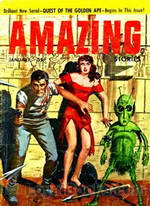 Quest of the Golden Ape
Quest of the Golden Ape
How could this man awaken with no past—no childhood—no recollection except of a vague world of terror from which his mother cried out for vengeance and the slaughter of his own people stood as a monument of infamy? Image is an illustration from the Gutenberg text. | |
By: Marie Corelli (1855-1924) | |
|---|---|
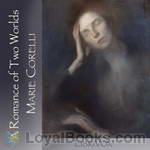 A Romance of Two Worlds
A Romance of Two Worlds
A Romance of Two Worlds starts with a young heroine telling her story of a debilitating illness that includes depression and thoughts of suicide. Her doctor is unable to help her and sends her off on a holiday where she meets a mystical character by the name of Raffello Cellini, a famous Italian artist. Cellini offers her a strange potion which immediately puts her into a tranquil slumber, in which she experiences divine visions. | |
By: Friedrich de la Motte Fouqué (1777-1843) | |
|---|---|
 Sintram and His Companions
Sintram and His Companions
Friedrich de la Motte Fouque, also the author of Undine, was a German Romantic writer whose stories were filled with knights, damsels in distress, evil enchantments, and the struggle of good against overpowering evil. 'My strength is as the strength of ten, Because my heart is pure.' Fouque blends the Romantic love for nature and ancient chivalry while telling a powerful story about a young man who yearns for that which he can never attain. | |
By: Arnold Kennedy (1853-1938) | |
|---|---|
 Merry Clappum Junction
Merry Clappum Junction
This is a jolly little book about a little boy, a dog, a train and a house. But not an ordinary train, oh no, and not an ordinary house either! And there are songs, too. The Preface is short, dull and only for the grown-ups. | |
By: Norman Lindsay (1879-1969) | |
|---|---|
 The Magic Pudding
The Magic Pudding
Bunyip Bluegum the koala sets out on his travels taking only a walking stick. At about lunchtime, feeling more than slightly peckish, he meets Bill Barnacle the sailor and Sam Sawnoff the penguin who are eating a pudding. The pudding is a magic one which, no matter how much you eat it, always reforms into a whole pudding again. He is called Albert, has thin arms and legs and is a bad-tempered, ill-mannered so-and-so into the bargain. His only pleasure is being eaten. The book is divided into four "slices" instead of chapters. (Introduction by Wikipedia) | |
By: William Allison Sweeney | |
|---|---|
 History of the American Negro
History of the American Negro
History Of The American Negro In The Great World WarHis Splendid Record In The Battle Zones Of Europe By W. Allison Sweeney Contributing Editor Of The Chicago Defender. CHAPTER I. SPIRITUAL EMANCIPATION OF NATIONS. The march of civilization is attended by strange influences. Providence which directs the advancement of mankind, moves in such mysterious ways that none can sense its design or reason out its import. Frequently the forces of evil are turned to account in defeating their own objects. Great tragedies, cruel wars, cataclysms of woe, have acted as enlightening and refining agents... | |
By: Tommaso Campanella (1568-1639) | |
|---|---|
 City of the Sun
City of the Sun
A dialogue between a Grandmaster of the Knights Hospitallers and a Genoese Sea-captain, about the latter's voyage to a utopian city. | |
By: Henry Beston | |
|---|---|
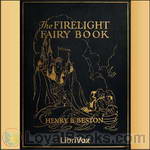 The Firelight Fairy Book
The Firelight Fairy Book
One pleasant summer day, as the fairy-tale lover sat reading a book beneath the low spreading branches of an oak tree, he heard a hum of wings, and looking up startled from his book, he discovered the Fairy Goldenwand standing close by. "Are you still seeking new fairy tales?" said the Fairy Goldenwand. "Yes," said the reader. "Will you write them down if I tell you some really new ones?" said the Fairy. "Oh yes, indeed," said the reader. "And I'll put them into a book;..." "Oh, that will be fine!" said the Fairy Goldenwand... | |
By: Lily Dougall (1858-1923) | |
|---|---|
 Mermaid
Mermaid
"'What a fool I was not to go where she beckoned!' mused Caius. 'Where? Anywhere into the heart of the ocean, out of this dull, sordid life into the land of dreams.' For it must all have been a dream—a sweet, fantastic dream, imposed upon his senses by some influence, outward or inward; but it seemed to him that at the hour when he seemed to see the maid it might have been given him to enter the world of dreams, and go on in some existence which was a truer reality than the one in which he now was... | |
By: Frances Browne (1816-1879) | |
|---|---|
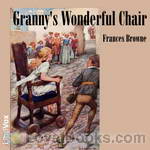 Granny's Wonderful Chair
Granny's Wonderful Chair
Her most famous work, Granny's Wonderful Chair, was published in 1856 and it is still in print to this day. It is a richly imaginative book of fairy stories and has been translated into many languages. This work, read as a child by Frances Hodgson Burnett, inspired the writings of Little Saint Elizabeth and Other Stories | |
By: Charles E. Carryl (1841-1920) | |
|---|---|
 Davy and the Goblin
Davy and the Goblin
Eight-year-old Davy reads Lewis Carroll's novel Alice's Adventures in Wonderland and begins to get very sleepy. Suddenly a goblin appears in the fire and takes Davy on a "believing voyage" much like Alice's own adventures in Wonderland, where he meets many characters from fantasy and literature. | |
By: Heywood Broun (1888-1939) | |
|---|---|
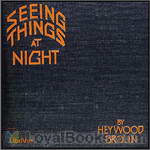 Seeing Things at Night
Seeing Things at Night
This Book is a collection of humorous short stories which describe the comedy in everyday things and situations. | |
By: Fanny Coe [editor] (1866-1956) | |
|---|---|
![The Book of Stories for the Storyteller by Fanny Coe [editor]](/image/layout2/The-Book-of-Stories-for-the-Storyteller.jpg) The Book of Stories for the Storyteller
The Book of Stories for the Storyteller
This is a delightful collection of 43 fairy tales (both old and new), folk lore, myths and real life stories by a variety of authors, brought together by writer Fanny E Coe. They are mostly short and are fun to listen to by children and adults and most teach valuable lessons about life. Some of the stories are: A Legend of the North Wind; How the Robin's Breast became Red; The Little Rabbits; St Christopher; The Necklace of Truth; A Night with Santa Claus; The Wolf-Mother of Saint Ailbe; Pocahontas and How Molly spent her Sixpence | |
By: Unknown | |
|---|---|
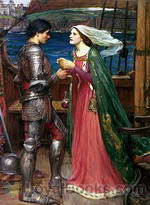 An Arthurian Miscellany
An Arthurian Miscellany
A collection of works that explore the rich and evocative legend of King Arthur. The exploits of Arthur and his Knights of the Round Table have been a staple of British literature through the centuries, drawing together themes of pagan wizardry, the search for the Holy Grail, chivalry and of course romance. | |
By: Owen Wister (1860-1938) | |
|---|---|
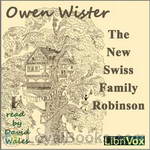 The New Swiss Family Robinson
The New Swiss Family Robinson
A parody of its famous predecessor, this short piece was written by Owen Wister for the Harvard Lampoon | |
By: Frank R. Stockton (1834-1902) | |
|---|---|
 The Bee-Man of Orn and Other Fanciful Tales
The Bee-Man of Orn and Other Fanciful Tales
A collection of nine enchanting short stories filled with curious beasts and unexpected endings. Included are The Bee-Man of Orn; The Griffin and the Minor Canon; Old Pipes and the Dryad; The Queen's Museum; Christmas Before Last: Or, The Fruit of the Fragile Palm; Prince Hassak's March; The Battle of the Third Cousins; The Banished King; and The Philopena | |
By: Ray Cummings (1887-1957) | |
|---|---|
 The World Beyond
The World Beyond
Lee Anthony finds himself and two of his friends kidnapped and taken on a strange voyage. | |
By: Eden Phillpotts (1862-1960) | |
|---|---|
 The Flint Heart
The Flint Heart
The flint heart is a stone of heart shape, forged in prehistoric times, that changes whoever owns it into a wicked person. The story of the flint heart's ultimate defeat involves multiple trips into fairyland by Charles and Unity, children of one of the heart's victims. Along the way the reader meets lots of fun characters such as the king of fairyland, a talking (and wounded) hot water bottle, and the mysterious Zagabog. Occasional references to British words and concepts may require some explanation for American readers, but the story is perfectly understandable without such explications. The droll narration makes the story as much fun for adults as for children. | |
By: Francis Godwin (1562-1633) | |
|---|---|
 The Man in the Moone
The Man in the Moone
A self-serving Spaniard discovers a means of traveling to the moon, describing his sensations in transit in terms remarkably consistent with modern astronauts' experiences. He finds on the moon a utopia, which he describes in detail, but being a fallen creature, he takes the first opportunity of coming home. ( | |
By: Margaret Gatty (1809-1873) | |
|---|---|
 Parables from Nature
Parables from Nature
Parables From Nature is a collection of short stories which were originally published as 4 separate volumes. They are inspired from Nature and written for children. Nevertheless, Gatty uses children's literature because she knows that in doing so, she can reach a wider group of readers and point out problems from the Victorian Age. | |
By: J. M. Barrie (1860-1937) | |
|---|---|
 Peter and Wendy
Peter and Wendy
Peter and Wendy tells the classic story of Peter Pan, a mischievous little boy who can fly, and his adventures on the island of Neverland with Wendy and her brothers, the fairy Tinker Bell, the Lost Boys, the Indian princess Tiger Lily, and the pirate Captain Hook. (Introduction modified from Wikipedia) | |
By: Mary Knight Potter (?-1915) | |
|---|---|
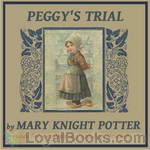 Peggy's Trial
Peggy's Trial
Ten-year old Peggy Clayton and her two younger brothers, Teddy and Harry, live with their father, Dr. Clayton, and Nurse, a woman who has taken care of them since the death of their mother when Peggy was five. Peggy is a sweet and kind little girl with a big imagination and a great sense of fun. Peggy's Trial follows her adventures with her friends at school, the mischief she and her brothers cause poor old Nurse, and even Peggy’s being chased by a bull. But nothing can prepare Peggy, Teddy and Harry when they fear they may lose their beloved father to a stepmother. | |
By: Jean Ingelow (1820-1897) | |
|---|---|
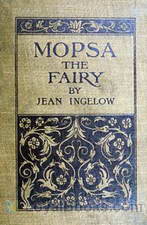 Mopsa the Fairy
Mopsa the Fairy
Jean Ingelow (1820 – 1897) was one of the more famous poets of the period, indeed many people suggested that she should succeed Alfred, Lord Tennyson as the first female Poet Laureate when he died in 1892. Mopsa the Fairy, written in 1869 is one of her more enduring stories. It is a delightful fantasy about a young boy who discovers a nest of young fairies and tells of their adventures together. | |
By: Walter De la Mare (1873-1956) | |
|---|---|
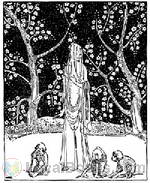 The Three Mulla-mulgars
The Three Mulla-mulgars
Three monkey brothers, Thumb, Thimble, and Nod, are Mulla-mulgars or royal monkeys. As she dies, their mother gives them the enchanted Wonderstone for protection, and tells them to follow their father. They embark on a journey of fantastical adventure to find their father, who left years earlier in search of the kingdom of his brother, the Prince of the Valleys of Tishnar, promising to return for them after he had found the way. | |
By: Various | |
|---|---|
 The Illustrated War News
The Illustrated War News
THE ILLUSTRATED WAR NEWS, N.B.--REMOVE INSETTED LEAFLET, DEC. 30 1914.THE GREAT WAR. In reviewing the events of the last week throughout the world-wide area of war, let us begin with the Dark Continent, where everything went in our favour--very brilliantly so. First of all, then, we may now be said to have completed our conquest of the German Cameroon country by taking possession of the whole of the railway which runs northward from Bonabari, and is now in the hands of our troops. A... | |
 New York Times Current History
New York Times Current History
The New York Times, CURRENT HISTORY, A Monthly Magazine, THE EUROPEAN WAR, VOLUME IIAPRIL, 1915 Germany's War Zone and Neutral Flags The German Decree and Interchange of Notes Answering American Protests to Germany and Britain BERLIN, Feb. 4, (by wireless to Sayville, L.I.)--The German Admiralty today issued the following communication: The waters around Great Britain and Ireland, including the whole English Channel, are declared a war zone on and after Feb. 18, 1915. Every enemy merchant ship found in this war zone will be destroyed, even if it is impossible to avert dangers which threaten the crew and passengers... | |
By: Robert E. Howard (1906-1936) | |
|---|---|
 Hour of the Dragon
Hour of the Dragon
The Hour of the Dragon, also known as Conan the Conqueror, is a fantasy novel by American writer Robert E. Howard featuring his sword and sorcery hero Conan the Cimmerian. It was one of the last Conan stories published before Howard's suicide although not the last to be written. The novel was first published in serial form in the pulp magazine Weird Tales in 1935 through 1936. | |
 Shadows in the Moonlight
Shadows in the Moonlight
For a genuine Conan tale, full of barbarian craftiness, magic, fierce fighting and his berserker strength, this meets every criteria and is one of the best. Conan was raiding with the Free Companions when they were trapped and slaughtered by the merciless Shah Amurath the great Lord of Akif. Conan is one of the very few who escape by hiding in the mud of the marshes like a beast living on raw snake and muskrat. Luck, which seems to have deserted him, smiles again and allows him the chance for revenge and he eagerly seizes it, destroying his enemy with fierce strokes... | |
By: John Rae (1882-1963) | |
|---|---|
 New Adventures of Alice (version 2 Dramatic Reading)
New Adventures of Alice (version 2 Dramatic Reading)
After reading and re-reading the book many time as a boy and wishing that Lewis Carroll would have written another Alice In Wonderland Book, John Rae began imagining what that girl would have gotten up to if he had done so. Telling these stories to his children over the years, where they were enthusiastically received, he finally decided to share them with the world. And here they are! The New Adventures of Alice | |
By: Algernon Blackwood (1869-1951) | |
|---|---|
 Bright Messenger
Bright Messenger
Julian LeVallon, born and raised alone in the Jura Mountains, is referred to psychiatrist Dr. Edward Fillery for care in London. But is LeVallon merely a schizophrenic with a secondary personality, "N.H." (non-human), or is he really an Elemental Being, a "bright messenger" who brings, perhaps, a new age of human evolution? And if so, is the human race ready for a major step forward? | |
By: Various | |
|---|---|
 Short Science Fiction Collection 050
Short Science Fiction Collection 050
Science fiction is a genre encompassing imaginative works that take place in this world or that of the author’s creation where anything is possible. The only rules are those set forth by the author. The speculative nature of the genre inspires thought, and plants seeds that have led to advances in science. The genre can spark an interest in the science and is cited as the impetus for the career choice of many scientists. It is a playing field to explore social perspectives, predictions of the future, and engage in adventures unbound into the richness of the human mind. | |
By: Robert E. Howard (1906-1936) | |
|---|---|
 Gods of the North
Gods of the North
"The Frost-Giant's Daughter" is, arguably the earliest chronological story by Robert E. Howard in terms of Conan's life. The brief tale is set somewhere in frozen Nordheim, geographically situated north of Conan's homeland, Cimmeria. Conan is depicted by Howard as a youthful Cimmerian mercenary traveling among the golden-haired Aesir in a war party. Shortly before the story begins, a hand-to-hand battle has occurred on an icy plain. Eighty men ("four score") have perished in bloody combat, and Conan alone survives the battlefield where Wulfhere's Aesir "reavers" fought the Vanir "wolves" of Bragi, a Vanir chieftain... | |
By: Various | |
|---|---|
 Short Science Fiction Collection 052
Short Science Fiction Collection 052
Science fiction is a genre encompassing imaginative works that take place in this world or that of the author’s creation where anything is possible. The only rules are those set forth by the author. The speculative nature of the genre inspires thought and plants seeds that have led to advances in science. The genre can spark an interest in the science and is cited as the impetus for the career choice of many scientists. It is a playing field to explore social perspectives, predictions of the future, and engage in adventures unbound into the richness of the human mind. | |
By: James Elroy Flecker (1884-1915) | |
|---|---|
 King of Alsander (Dramatic Reading)
King of Alsander (Dramatic Reading)
First published in 1914, the King of Alsander is the only novel by James Elroy Flecker, best known as a poet, but also a noted scholar, linguist and diplomat. Flecker's love of learning, language and travel, and his keen satirical insight into politics are all in evidence in this phantasmagoric tale. As the author himself describes it: Here is a tale all romance - a tale such as only a Poet can write for you, O appreciative and generous Public - a tale of madmen, kings, scholars, grocers, consuls,... | |
By: Various | |
|---|---|
 Fantasy, Faeries and Ghosts
Fantasy, Faeries and Ghosts
In this collection three of the original titans in the field of fantasy literature (Edgar Allan Poe, George MacDonald, Joseph Sheridan Le Fanu) take you on a magical guided tour of fairyland and adjoining countries and introduce you to whimsical, strange and even scary encounters and adventures with inhabitants such as good and bad fairies, ghosts and even the Devil. The stories included are “Cross Purposes” “The Carasoyn” “Bon-Bon” “The Child That Went With The Fairies” “Madam Crowl’s Ghost” and as an added bonus the beautiful (and cautionary) fairy poem “Queen Mab” by Thomas Hood. | |
By: E. E. Smith (1890-1965) | |
|---|---|
 Lord Tedric
Lord Tedric
Time is the strangest of all mysteries. Relatively unimportant events, almost unnoticed as they occur, may, in hundreds of years, result in Ultimate Catastrophe. On Time Track Number One, that was the immutable result. But on Time Track Number Two there was one little event that could be used to avert it—the presence of a naked woman in public. So, Skandos One removed the clothing from the Lady Rhoann and after one look, Lord Tedric did the rest! | |
 Lord Tedric (version 2)
Lord Tedric (version 2)
The best of science fantasy meets the best of science fiction as Tedric battles his way through two universes of adventure: In one universe...Tedric the Ironmaster wields the mightiest sword his world has ever seen - and swears to break the power of the evil god Sarpedion, or die in the attempt. This is the second in a series and takes place when Tedric, now a Lord, begins learning how to plan and observe instead of just rushing in to kill. In another universe...only Tedric's strength and daring stand between the dwindling power of the Terran Empire and total alien conquest... | |
By: H. P. Lovecraft (1890-1937) | |
|---|---|
 The Dunwich Horror
The Dunwich Horror
In a rundown farmhouse near isolated, rural Dunwich, a bizarre family conjures and nurtures an evil entity from another realm, with the purpose of destroying the world and delivering it to ancient gods to rule, and only an aged university librarian can stop them. The Dunwich Horror was first published in 1929 in Weird Tales. | |
By: Robert E. Howard (1906-1936) | |
|---|---|
 Shadows in Zamboula
Shadows in Zamboula
Despite a warning received in the Suq by an elderly desert nomad, Conan stays the night in a cheap tavern in Zamboula, run by Aram Baksh. As night falls, a black Darfarian cannibal enters to drag him away to be eaten. All of the Darfar slaves in the city are cannibals who roam the streets at night. As they only prey on travellers, the people of the city tolerate this and stay locked securely in their homes, while nomads and beggars make sure to spend the night at a comfortable distance from its walls... | |
By: Various | |
|---|---|
 Short Science Fiction Collection 051
Short Science Fiction Collection 051
Science fiction is a genre encompassing imaginative works that take place in this world or that of the author’s creation where anything is possible. The only rules are those set forth by the author. The speculative nature of the genre inspires thought and plants seeds that have led to advances in science. The genre can spark an interest in the science and is cited as the impetus for the career choice of many scientists. It is a playing field to explore social perspectives, predictions of the future, and engage in adventures unbound into the richness of the human mind. | |
By: Robert E. Howard (1906-1936) | |
|---|---|
 People of the Black Circle (version 2)
People of the Black Circle (version 2)
The People of the Black Circle" is one of the original novellas about Conan the Cimmerian, written by American author Robert E. Howard and first published in Weird Tales magazine in three parts over the September, October and November 1934 issues. Howard earned $250 for the publication of this story. It is set in the pseudo-historical Hyborian Age and concerns Conan kidnapping a regal princess of Vendhya (pre-historical India) and foiling a nefarious plot of world domination by the Black Seers of Yimsha... | |
By: Various | |
|---|---|
 Short Science Fiction Collection 053
Short Science Fiction Collection 053
Science fiction is a genre encompassing imaginative works that take place in this world or that of the author’s creation where anything is possible. The only rules are those set forth by the author. The speculative nature of the genre inspires thought and plants seeds that have led to advances in science. The genre can spark an interest in the sciences and is cited as the impetus for the career choice of many scientists. It is a playing field to explore social perspectives, predictions of the future, and engage in adventures unbound into the richness of the human mind. | |
By: Various | |
|---|---|
 Fantasy, Faeries and Ghosts, Volume 2
Fantasy, Faeries and Ghosts, Volume 2
Join the original masters of fantasy E.T.A Hoffmann, George MacDonald, Violet Hunt, J. Sheridan Le Fanu and Bram Stoker as they whisk you into the world of faeries and it’s mystical regions far beyond imagination. In this amazing collection you will find gnomes, fairies, changelings, phantoms and other bizarre wonderful creatures of the ethereal realms. Here are six tales sure to please all those that enjoy fantasy literature at it’s finest. - Summary by kadath | |
 Short Science Fiction Collection 055
Short Science Fiction Collection 055
Science fiction is a genre encompassing imaginative works that take place in this world or that of the author’s creation where anything is possible. The only rules are those set forth by the author. The speculative nature of the genre inspires thought and plants seeds that have led to advances in science. The genre can spark an interest in the sciences and is cited as the impetus for the career choice of many scientists. It is a playing field to explore social perspectives, predictions of the future, and engage in adventures unbound into the richness of the human mind. | |
By: Marie Corelli (1855-1924) | |
|---|---|
 Young Diana
Young Diana
Poor Diana May. Her fiancé has jilted her, her parents think she is an encumbrance and no one recognises her intelligence. She seems destined to remain unloved, unappreciated and unpaid - until she decides to take control of her life. It all begins with an advertisement for an assistant to an eccentric scientist with a hidden laboratory in Switzerland... - Summary by Newgatenovelist | |
By: Various | |
|---|---|
 Short Science Fiction Collection 056
Short Science Fiction Collection 056
Science fiction is a genre encompassing imaginative works that take place in this world or that of the author’s creation where anything is possible. The only rules are those set forth by the author. The speculative nature of the genre inspires thought and plants seeds that have led to advances in science. The genre can spark an interest in the sciences and is cited as the impetus for the career choice of many scientists. It is a playing field to explore social perspectives, predictions of the future, and engage in adventures unbound into the richness of the human mind. - Summary by Amy Gramour | |
By: Jay Franklin (1897-1967) | |
|---|---|
 Rat Race
Rat Race
When an atomic explosion destroys the battleship Alaska, Lt. Commander Frank Jacklin returns to consciousness in New York and is shocked to find himself in the body of Winnie Tompkins, a dissolute stock-broker. Unable to explain his real identity, Jacklin attempts to fit into Tompkins' way of life. Complications develop when Jacklin gets involved with Tompkins' wife, his red-haired mistress and his luscious secretary. Three too many women for Jacklin to handle. His foreknowledge of the Alaska sinking... | |
By: William Morris (1834-1896) | |
|---|---|
 Story of the Glittering Plain
Story of the Glittering Plain
In this early example of the modern high fantasy genre, Hallblithe, a warrior of the House of Raven, sets out in pursuit of the pirates who have kidnapped his troth-plight maiden, the Hostage. Kidnapped himself, Hallblithe sails to the Isle of Ransom in the company of the giant Puny Fox. Travelling onward to the Land of the Glittering Plain, he spurns the offer of eternal youth and the hand of the King's daughter to continue the search for his beloved. First published in 1890 in the English Illustrated Magazine, The Story of the Glittering Plain was re-published in 1973 as the first volume of the celebrated Newcastle Forgotten Fantasy Library... | |
By: Vachel Lindsay (1879-1931) | |
|---|---|
 Golden Book of Springfield
Golden Book of Springfield
The Golden Book of Springfield is American poet Vachel Lindsay's strange and mystical odyssey through the Springfield, Illinois of 2018, where the residents of that city strive to turn their home into a democratic utopia. It is a "Springfield a hundred years hence," a dreamlike space of spiritual and social awakenings. But when the threat of international war begins to loom over the horizon, the citizens of Springfield must find new ways to protect their city and keep it a "practical City of God... | |
By: Sir Henry Newbolt (1862-1938) | |
|---|---|
 Aladore
Aladore
Ywain, a knight bored with his administrative duties, abandons his estate to his younger brother and goes on a pilgrimage to seek his heart's desire. Following a will-o'-the-wisp resembling a child, his quest takes him to the city of Paladore, where he meets the lady Aithne, half-fae enchantress. Sir Henry Newbolt's allegorical fantasy was published in hardback in Britain in 1914 and in the Uniited States a year later. It was revived in 1975 as the fifth volume in the celebrated Newcastle Forgotten Fantasy Library. - Summary by Phil Benson, adapted from Wikipedia | |
By: Florence Dixie (1855-1905) | |
|---|---|
 Gloriana, or The Revolution of 1900
Gloriana, or The Revolution of 1900
At the age of twelve, Gloriana de Lara dreams of the day that women are no longer second-class citizens, be able to vote, can aspire to any career open to men. She makes a solemn vow in front of her mother, Speranza, that she will make her dream reality, or die trying. Some years later, she reappears in the guise of Hector D’Strange, and starts her revolution to free women from oppression. Written by gender equality and women’s suffrage activist Lady Florence Dixie in 1890, Gloriana has no shortage of self-confident, heroic and forceful women. | |
By: Various | |
|---|---|
 Short Science Fiction Collection 058
Short Science Fiction Collection 058
Science fiction is a genre encompassing imaginative works that take place in this world or that of the author’s creation where anything is possible. The only rules are those set forth by the author. The speculative nature of the genre inspires thought and plants seeds that have led to advances in science. The genre can spark an interest in the sciences and is cited as the impetus for the career choice of many scientists. It is a playing field to explore social perspectives, predictions of the future, and engage in adventures unbound into the richness of the human mind. - Summary by A. Gramour | |
By: William Morris (1834-1896) | |
|---|---|
 Prose Romances from the Oxford and Cambridge Magazine (1856)
Prose Romances from the Oxford and Cambridge Magazine (1856)
William Morris initiated the genre of high fantasy in a number of short novels written toward the end of his life. But he had already experimented with the genre much earlier in stories written for the Oxford and Cambridge Magazine, which he launched as a student at Oxford University in 1856. Published posthumously in book form, and reprinted as the eighth volume of the celebrated Newcastle Forgotten Fantasy Library under the title Golden Wings and other Stories, these short stories make an entertaining collection that stands up well against Morris's mature work. - Summary by Phil Benson | |
By: Various | |
|---|---|
 Short Science Fiction Collection 059
Short Science Fiction Collection 059
Science fiction is a genre encompassing imaginative works that take place in this world or that of the author’s creation where anything is possible. The only rules are those set forth by the author. The speculative nature of the genre inspires thought and plants seeds that have led to advances in science. The genre can spark an interest in the sciences and is cited as the impetus for the career choice of many scientists. It is a playing field to explore social perspectives, predictions of the future, and engage in adventures unbound into the richness of the human mind. - Summary by A. Gramour | |
 Short Science Fiction Collection 060
Short Science Fiction Collection 060
Science fiction is a genre encompassing imaginative works that take place in this world or that of the author’s creation where anything is possible. The only rules are those set forth by the author. The speculative nature of the genre inspires thought and plants seeds that have led to advances in science. The genre can spark an interest in the sciences and is cited as the impetus for the career choice of many scientists. It is a playing field to explore social perspectives, predictions of the future, and engage in adventures unbound into the richness of the human mind. | |
By: Edwin Lester Arnold (1857-1935) | |
|---|---|
 Wonderful Adventures of Phra the Phoenician
Wonderful Adventures of Phra the Phoenician
Phra, a Phoenician merchant and warrior, settles in the south of England as husband to Blodwen, a British princess. Slain during the Roman invasion, he reawakens several hundred years later to find that Blodwen has painstakingly tattooed the history of his family and village on his body. Slipping in and out of a state of suspended animation, Phra goes on to play his part in the departure of the Romans, the Norman conquest, and the Hundred Years' War. Meanwhile, Blodwen appears to Phra from time to time in ethereal form and in the guise of a succession of beautiful lovers... | |
By: Marion Zimmer Bradley (1930-1999) | |
|---|---|
 Falcons of Narabedla
Falcons of Narabedla
Somewhere on the Time Ellipse, Mike Kenscott became Adric of the Scarlet Tower, and the only way to return to his own identity was to find the Keep of the Dreamer, and loose the terrible Falcons of Narabedla. A classic novella by master science fiction writer Marion Zimmer Bradley, originally published in Other Worlds magazine in 1957. - Summary by Mark Nelson | |
By: William Morris (1834-1896) | |
|---|---|
 Well at the World's End: Book 4: The Road Home
Well at the World's End: Book 4: The Road Home
In The Well at the World's End, Ralph of Upmeads, youngest son of the King of Upmeads, leaves home without permission and sets out looking for adventure. When he hears rumors of a well that exudes water with magical properties, he is intrigued and begins his quest. Along the way, he travels through various towns and wildernesses and meets -- and is sometimes led astray by -- a host of interesting people including a mysterious knight, a beautiful woman who may be a goddess, a treacherous servant, a brave tavern wench, a barbarian warrior, a solitary sage, and a sadistic king. Book 4 finishes his adventure. - Summary by Kristingj | |
By: Robert E. Howard (1906-1936) | |
|---|---|
 Shadows in Zamboula (version 2)
Shadows in Zamboula (version 2)
In the dark streets of Zamboula, huge ghouls stalk the night seeking victims for their ghastly rites and feasts. Conan is passing through this city and is almost a victim but escapes, only to rush to the aid of a beautiful, voluptuous maiden still in their horrible talons. Swords flash, thews are strained and the mighty Conan almost meets his match in the temple of the monkey god. Will he escape? Will he get the girl? Listen and marvel! Excellent story, well told as always by Howard. Summary by phil chenevert | |
 Hour of the Dragon (version 2)
Hour of the Dragon (version 2)
This is absolutely the best Conan novel ever written in my opinion. It follows Conan when at the peak of his power as king of Aquilonia, he is overthrown by dark, evil magic from Stygia and turned into a hunted refugee. A 3,000 year old magician from the most evil empire that ever existed is resurrected and with his sinister aid, Conan's enemies cause the barbarian's downfall. The plot twists and turns in wonderful fashion, following the Heart of Arihman, a strange extremely powerful magic jewel from another universe... | |
By: William Morris (1834-1896) | |
|---|---|
 Child Christopher and Goldilind the Fair
Child Christopher and Goldilind the Fair
A prose romance set in the forested kingdom of Oakenrealm, where a squirrel can go about from end to end without touching the ground, in which Christopher wins the fair queen Goldilind, discovers his true identity and reclaims his birthright. In this tale of valour and romance, William Morris reimagined the medieval lay of Havelock the Dane. Child Christopher was originally published by Morris's Kelmscott Press and reprinted in the 1970s as the twelfth volume of the celebrated Newcastle Forgotten Fantasy Library. - Summary by Phil Benson | |
By: Various | |
|---|---|
 Short Science Fiction Collection 062
Short Science Fiction Collection 062
Science fiction is a genre encompassing imaginative works that take place in this world or that of the author’s creation where anything is possible. The only rules are those set forth by the author. The speculative nature of the genre inspires thought and plants seeds that have led to advances in science. The genre can spark an interest in the sciences and is cited as the impetus for the career choice of many scientists. It is a playing field to explore social perspectives, predictions of the future, and engage in adventures unbound into the richness of the human mind. -A. Gramour | |
 Short Science Fiction Collection 063
Short Science Fiction Collection 063
Science fiction is a genre encompassing imaginative works that take place in this world or that of the author’s creation where anything is possible. The only rules are those set forth by the author. The speculative nature of the genre inspires thought and plants seeds that have led to advances in science. The genre can spark an interest in the sciences and is cited as the impetus for the career choice of many scientists. It is a playing field to explore social perspectives, predictions of the future, and engage in adventures unbound into the richness of the human mind. - Summary by A. Gramour | |
By: George Griffith (1857-1906) | |
|---|---|
 Mayfair Magician; a Romance of Criminal Science
Mayfair Magician; a Romance of Criminal Science
Our narrator, a researcher, finds himself snowed in at a Scottish prison. The resident doctor, an observer of criminal psychology, offers him hospitality and entertainment in the form of this story, an account of the bizarre case of a strange prisoner in motorcycle goggles, why he must wear them, and what he did to earn a life sentence. - Summary by A. Gramour | |
By: Various | |
|---|---|
 Short Science Fiction Collection 064
Short Science Fiction Collection 064
Science fiction is a genre encompassing imaginative works that take place in this world or that of the author’s creation where anything is possible. The only rules are those set forth by the author. The speculative nature of the genre inspires thought and plants seeds that have led to advances in science. The genre can spark an interest in the sciences and is cited as the impetus for the career choice of many scientists. It is a playing field to explore social perspectives, predictions of the future, and engage in adventures unbound into the richness of the human mind.-A. Gramour | |
By: Evelyn Underhill (1875-1941) | |
|---|---|
 Column of Dust
Column of Dust
Evelyn Underhill, the preeminent scholar of mysticism, wrote 3 novels in her youth, of which this is #3. Constance Tyrrel, a poor but literate woman works in a bookshop, suffers ennui, wonders if there is more to life than what she sees, invokes a ritual that she finds in a dusty old volume. Meanwhile, a disembodied spirit is consumed by a desire to know about the nature and content of the material world. It is drawn by Constance's call, where it appears as a column of dust. The two embark on adventures edifying to both and, incidentally to the reader. - Summary by Josh Mitteldorf | |
By: Godfrey Sweven (1845-1935) | |
|---|---|
 Riallaro: The Archipelago of Exiles
Riallaro: The Archipelago of Exiles
John Macmillan Brown was born in New Zealand and a University professor, wrote under the pseudonym Godfrey Sweven. An excerpt from the Introduction: "Absorbed in contemplation of its sublimity, I sat for a moment on a rock that rose out of the bush. I almost leapt from it, startled; a voice, unheralded, fell like a falling star through the soundless air. I had heard no footstep, no snap of trodden twig or rustle Of reluctant branch. My senses were so thrilled with the sound that its purport shot past them. There at the base of the rock stood the strangest figure that ever met my eyes." - Summary by Kirk202 | |
By: Various | |
|---|---|
 Short Science Fiction Collection 065
Short Science Fiction Collection 065
Science fiction is a genre encompassing imaginative works that take place in this world or that of the author’s creation where anything is possible. The only rules are those set forth by the author. The speculative nature of the genre inspires thought and plants seeds that have led to advances in science. The genre can spark an interest in the sciences and is cited as the impetus for the career choice of many scientists. It is a playing field to explore social perspectives, predictions of the future, and engage in adventures unbound into the richness of the human mind. | |
By: Olivia Shakespear (1863-1938) | |
|---|---|
 Beauty's Hour
Beauty's Hour
The young, intelligent Mary discovers that through an act of will she can transform her appearance to make herself incredibly beautiful. But will her newfound identity be all that she hopes? This recording is from the novella’s original publication in The Savoy in August and September 1896. | |
By: Godfrey Sweven (1845-1935) | |
|---|---|
 Limanora, The Island Of Progress
Limanora, The Island Of Progress
Our ethereal man with wings, whom we met in Riallaro, continues his tale about Limanora which is a Utopian Island created as an experiment in Eugenics. Medical and technological advances have led to a central Power Source, computers, and weather control to name a few. - Summary by kirk202 | |
By: Poul William Anderson (1926-2001) | |
|---|---|
 Golden Slave
Golden Slave
100 B.C. The Cimbrian hordes galloped across the dawn of history and clashed in screaming battle against the mighty Roman legions. Led by their chief, Boierik, and his son, Eodan, the hungry and homeless pagan tribes hurled back the Romans time after time in their desperate search for land. But for all the burning towns, the new-caught women weeping, the wine drunk, the gold lifted, the Cimbri did not find a home. And now it was over. At Vercellae the Roman armies shattered them completely. Only a few survived—and for them death would have been more merciful... | |
By: Various | |
|---|---|
 Short Science Fiction Collection 066
Short Science Fiction Collection 066
Science fiction is a genre encompassing imaginative works that take place in this world or that of the author’s creation where anything is possible. The only rules are those set forth by the author. The speculative nature of the genre inspires thought and plants seeds that have led to advances in science. The genre can spark an interest in the sciences and is cited as the impetus for the career choice of many scientists. It is a playing field to explore social perspectives, predictions of the future, and engage in adventures unbound into the richness of the human mind. - Summary by A. Gramour | |
By: Ellen Thorneycroft Fowler (1860-1929) | |
|---|---|
 Fuel of Fire
Fuel of Fire
"Then was there war in the house of Baxendale. Guy had made up his mind to wed the fair daughter of the forester; while Sir Stephen and Dame Alice his wife had made up their minds — with equal firmness — that no son of their noble name should mate with a daughter of the people". A rumor started that the girl was a witch and so she was burned. However before she was burned she cursed the family who condemned her: "First by the King, and then by the State, And thirdly by that which is thrice as great As these, and a thousandfold stronger and higher Shall Baxendale Hall be made fuel of fire"... | |